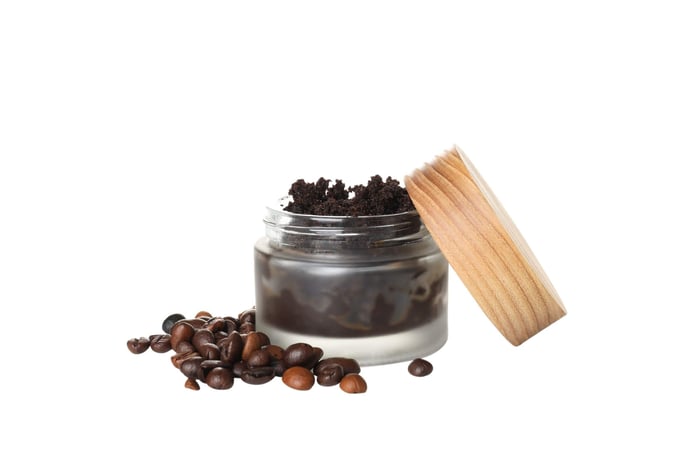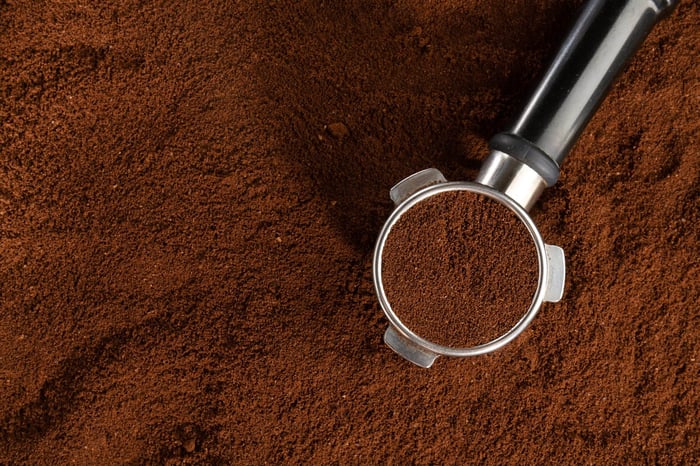If you’re starting your day with premium beans from Bones Coffee, don’t let those delicious grounds go to waste.
Beyond the initial brewing process that fills your mug with flavor, coffee grounds—especially when they’re as fresh and aromatic as Bones Coffee’s small-batch roasts—can be repurposed in surprisingly useful ways.
Reusing coffee grounds is not only eco-friendly but also saves money, reduces household waste, and supports sustainable living.
What Are the Benefits of Reusing Coffee Grounds?
One of the primary advantages is reducing the waste sent to landfills. Coffee grounds are a significant component of organic waste, and by repurposing them, the volume of waste that requires disposal is decreased.
This waste reduction conserves landfill space and minimizes methane production, a potent greenhouse gas emitted from decomposing organic matter in landfills.
Another environmental benefit of reusing old coffee grounds is their potential to enhance soil quality. Coffee grounds are rich in nitrogen, a vital nutrient for plant growth.
When used as a soil amendment, they can improve soil structure, increase water retention, and promote the development of beneficial microorganisms. This can lead to healthier plants and reduced reliance on chemical fertilizers, which are often associated with environmental pollution.
Key Environmental Benefits:
- Less Waste: Reduces landfill volume.
- Less Waste: Reduces landfill volume.
- Soil Booster: Improves fertility and structure.
Used grounds can also be composted. Due to their high nitrogen content, they are considered a "green" compost material, helping balance the carbon-to-nitrogen ratio in compost piles.
This balance is crucial for efficient decomposition and the production of nutrient-rich compost, which can improve garden soil and reduce the need for synthetic fertilizers.
Reusing coffee grounds can contribute to water conservation. When used as mulch, coffee grounds can help retain soil moisture, reducing the need for frequent watering. This is particularly beneficial in arid regions where water resources are limited.
If not stored properly, wet coffee grounds can create a breeding ground for mold and bacteria, so drying is essential before storing.
By incorporating fresh grounds into various environmental practices, individuals and communities can promote sustainability and reduce their ecological footprint.
Encouraging the reuse of coffee grounds supports environmental health and fosters a culture of resourcefulness and innovation. Consider integrating coffee grounds into your daily routine to contribute to a more sustainable future.
Cost-Saving Advantages to Reusing Coffee Grounds
Reusing coffee grounds can offer several cost-saving advantages, making it an appealing practice for individuals seeking to maximize the utility of their household resources.
Application | Potential Savings | Alternative Product Cost |
Fertilizer | High | $20-$60 per bag |
Cleaning Products | Moderate | $5-$15 per item |
Skincare Exfoliant | Moderate | $5-$69 per product |
By repurposing used coffee grounds, consumers can reduce the need to purchase additional products for various applications, thereby decreasing household expenses. This practice encourages a more resourceful and economical approach to household management.
Natural Fertilizer for Gardens
Coffee grounds are rich in nitrogen, potassium, and phosphorus and trace minerals like calcium and iron, ideal plant nutrients. They also improve soil texture and moisture retention.
Application Methods:
- Direct: Lightly sprinkle around plants—avoid thick layers to prevent clumping.
- Compost: Add to compost piles to supply nitrogen and balance carbon.
- Liquid Fertilizer: Soak grounds in water to create "coffee ground tea" for watering.
Additionally, coffee grounds can be used in composting, enhancing the nutrient content of compost piles without the need for expensive compost additives. You can easily enrich your garden with Bones Coffee grounds and give back to the earth while enjoying your favorite roast.
Tip: Monitor soil pH when using grounds. Though slightly acidic, their pH neutralizes as they break down. Test the soil regularly for optimal results. |
Household Cleaning: Natural Abrasive
Another area where cost savings can be realized is in household cleaning. Bones Coffee can also make your countertops sparkle!
Coffee grounds possess abrasive properties that make them effective for scrubbing surfaces, potentially reducing the need for commercial cleaning products.
This can be particularly beneficial for cleaning pots, pans, and other kitchen items, where the grounds can help remove stubborn residues.
Tip: Store used coffee grounds in an airtight container to maintain their effectiveness for future use. |
DIY Skincare Exfoliant
Coffee grounds can be utilized as an exfoliant in homemade skincare products. Their coarse texture makes them effective exfoliants, helping to remove dead skin cells and promote a smoother complexion. This exfoliation can enhance the skin's appearance by improving circulation and encouraging cell turnover.
This can eliminate the need to purchase costly exfoliating scrubs, as coffee grounds can be mixed with other natural ingredients such as coconut oil, honey, or yogurt to create a paste that can be applied to the skin.
Benefits in Skincare:
- Effective Exfoliation: The gritty texture of coffee grounds helps slough off dead skin cells, revealing fresher skin.
- Antioxidant Protection: Coffee contains antioxidants that may help protect the skin from damage caused by free radicals.
- Increased Blood Flow: Massaging coffee grounds onto the skin can stimulate blood flow, potentially reducing the appearance of cellulite.
- Brighter, Even-Toned Skin: Regular use of coffee scrubs may lead to a brighter and more even skin tone.
- Anti-inflammatory Properties: Coffee grounds may help reduce inflammation and redness in the skin.
While coffee grounds offer several potential benefits, it is crucial to consider individual skin sensitivities. Some individuals may experience irritation or allergic reactions, so it is advisable to perform a patch test before applying coffee-based products to larger areas of the skin.
Tip: Always patch test new skincare recipes and use fresh or properly stored grounds to avoid bacterial growth. |
Natural Pest Control with Coffee Grounds
Yes, coffee grounds have been recognized for their potential effectiveness in pest control—just another of the many other ways to extend the value of your morning brew. They offer a natural and environmentally friendly alternative to chemical pesticides.
The use of coffee grounds in pest management is primarily attributed to their texture and chemical composition, which can deter various pests from infesting gardens and homes.
Coffee grounds are particularly effective against soft-bodied insects such as slugs and snails. Their abrasive texture can create a physical barrier that these pests find difficult to cross.
Additionally, coffee grounds' caffeine content is toxic to many insects, acting as a natural insecticide. Research has shown that caffeine can disrupt insects' central nervous systems, leading to their death.
Pests Affected by Coffee Grounds:
- Slugs
- Snails
- Ants
How to Apply:
- Sprinkle: Evenly distribute a thin layer of used coffee grounds around the base of plants or along garden borders to create a barrier.
- Soil Mix: Incorporate coffee grounds into the top layer of soil to enhance pest deterrence and enrich the soil with nutrients.
- Compost: Add coffee grounds to compost piles, which can be used as a natural pest-repellent mulch.
While coffee grounds can be a helpful tool in pest control, it is essential to note that they may not be effective against all types of pests. For instance, coffee grounds are unlikely to deter larger pests such as rodents or birds.
Incorporating coffee grounds into one's gardening routine can be beneficial for those seeking a sustainable and cost-effective pest control method.
By utilizing this natural resource, gardeners can reduce their reliance on chemical pesticides, contributing to a healthier environment.
Tip: For best results, use fresh coffee grounds rather than those stored for extended periods, as the potency of caffeine can diminish over time. |
Deodorizing Properties
Due to their nitrogen content and absorbency, coffee grounds trap odor molecules and neutralize smells in small spaces.
They can be placed in open containers or sachets and left in areas prone to unpleasant smells, such as refrigerators, trash cans, or closets. The grounds work by trapping odor molecules, thus freshening the air.
Odor-Control Tips:
- Place a bowl of dried coffee grounds in the refrigerator to eliminate food odors.
- Use coffee grounds in a sachet to freshen up gym bags or shoes.
- Sprinkle coffee grounds at the bottom of trash cans to combat odors.
Surfaces to Avoid
Coffee grounds are often praised for their abrasive texture, which can effectively scrub and deodorize various surfaces. However, coffee grounds are not recommended for certain surfaces and materials due to potential damage or ineffectiveness.
Understanding these limitations is crucial for ensuring that cleaning efforts are safe and effective.
- Porous Surfaces: Coffee grounds can become lodged in the tiny openings of porous surfaces such as unsealed wood, natural stone, and certain types of tile. This can lead to staining or discoloration, as the grounds may leave behind a residue that is difficult to remove.
- Delicate Fabrics: The coarse nature of coffee grounds can be abrasive to delicate fabrics, potentially causing wear or damage. Materials such as silk, satin, and other fine textiles should be cleaned using gentler methods.
- Non-Stick Cookware: Coffee grounds' abrasive quality can scratch the surface of non-stick cookware, compromising its non-stick properties. To maintain their integrity, it is advisable to use non-abrasive cleaning agents for these items.
- Glass and Mirrors: While coffee grounds can be effective for scrubbing, they may leave behind scratches on glass and mirrors. These surfaces require a softer touch to avoid damage.
Materials to Consider
- Metals: While coffee grounds can be used on some metals, caution should be exercised with softer metals like aluminum, which can be scratched easily. Harder metals, such as stainless steel, may be more suitable for cleaning with coffee grounds.
- Plastic: Some plastics may be prone to scratching when cleaned with coffee grounds. It is advisable to test a small, inconspicuous area first to ensure that no damage occurs.
Tips for Safe Use
- Test First: Always test coffee grounds on a small, hidden surface area to check for adverse reactions.
- Use Sparingly: Apply minimal coffee grounds to avoid excessive abrasion.
- Rinse Thoroughly: Ensure all coffee grounds are rinsed away completely to prevent residue buildup.
Shelf Life of Reused Coffee Grounds

Like many organic materials, reused coffee grounds have a shelf life and can eventually degrade in quality. Proper storage is essential to maintain their usability and prevent the growth of mold or bacteria. When stored correctly, coffee grounds can be reused for various purposes for weeks to months.
Storage Condition | Estimated Shelf Life |
Airtight, cool, and dry | 2-3 months |
Exposed to air | 1-2 weeks |
High humidity | Less than 1 week |
However, several factors can influence their longevity, including moisture content, exposure to air, and temperature.
- Drying: Before storing, ensure that the coffee grounds are thoroughly dried. Moisture can lead to mold growth, rendering the grounds unusable.
- Airtight Containers: Store the dried coffee grounds in airtight containers to minimize exposure to air and moisture. Glass jars with tight-fitting lids or resealable plastic bags are suitable options.
- Cool, Dark Place: Keep the containers in a cool, dark place to prevent heat and light from degrading the grounds.
Signs of Spoilage
- Mold Growth: Visible mold indicates that the coffee grounds are no longer suitable for reuse.
- Off Odor: A sour or musty smell suggests that the grounds have begun to decompose.
- Discoloration: Any significant color change may indicate spoilage.
Following proper storage practices, you can extend their usability and enjoy various applications. Whether for gardening, cleaning, or creative projects, ensuring the quality of your coffee grounds will enhance their effectiveness.
Start implementing these storage tips today to maximize your second batch and contribute to a more sustainable lifestyle.
Repurpose with Purpose
Reusing coffee grounds gives a second life to what many see as waste. These used grounds can do a full second cup of work beyond the brew.
Can you reuse coffee grounds for more than one task? Whether in the morning as a deodorizer or the afternoon as a natural exfoliant, they help cut back on buying extra products. Even your meats can benefit, as some chefs use ground spices in rubs to deepen flavor. With their gritty texture and active compounds, spices are versatile and full of potential.
Every pack of Bones Coffee delivers more than just a delicious drink. Whether you're enjoying flavors like Shark Bite or Cherry Ice Cream, the used grounds are just as worthy of attention.
Dry them out. Sprinkle into a garden. Add to your homemade scrub. Drop into your compost. With Bones Coffee, sustainability tastes as good as it smells.







